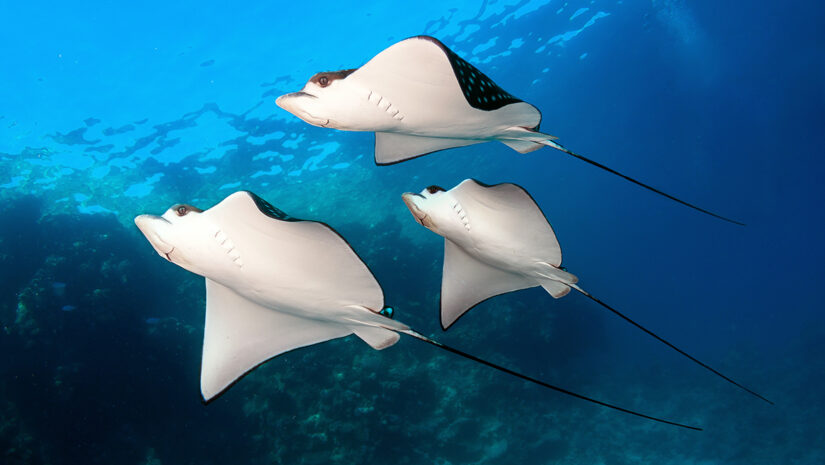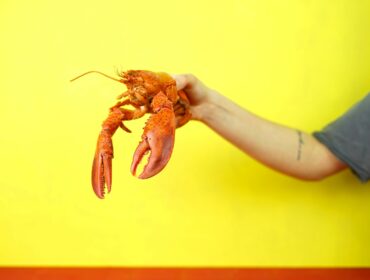The coral sea, found off the coast of Australia, is abundant in both plant and animal life, among which are rays. Rays are fish that have winglike pectoral fins and flattened bodies. Their mouths are on the underside of their bodies, and their eyes are on the top side. Some have dangerous spines that look like tails for hunting and self-defense, but they are generally docile and can act rather curious when divers come around. Unlike most other fish, they have skeletons made of cartilage. Rays are also known for laying eggs enclosed in a packet familiarly known in many island nations as a “mermaid’s purse.” Let’s check out a few types of ‘ray’ you’ll see in the Coral Sea.
Manta Ray
One of the more spectacular types of ray found in the Coral Sea is the manta ray. It’s also called the devil ray because of the hornlike protuberances on its head. The manta is a member of the Mobulidae family, which contains about a dozen species. The Mobula, which lives in the Coral Sea, is only about two feet across, but the manta can be 22 feet across. Despite its significant size, the manta ray is relatively harmless and feeds on crustaceans and smaller fish. It uses its horns to herd the fish into its mouth. Often, a manta will leap right out of the water. No one is sure why it does this. It might be shaking off parasites or maybe just having fun.
White Spotted Eagle Ray
Another type of ray in the Coral Sea is the white spotted eagle ray. This ray has somewhat angular wings and a black or blue body covered with white spots on the back. It has a long tail equipped with a spine and is snout-shaped, somewhat like a duck’s bill. It can have a wingspan of up to 11 and a half feet and weigh about 507 pounds. Like the manta, it sometimes leaps out of the water. It also swims in schools when it’s not breeding and can be found at depths of between three feet and 90 feet.
Smooth Stingray
This is the most enormous stingray to swim in and around the Coral Sea. It can be 14 feet long with a body about six and a half feet long and weighs up to 770 pounds. It has a dark back spotted along the edges and a pale belly. The tail has a venomous spine. A scuba diver should know that if this spine strikes him or her, the wound can be life-threatening. The smooth stingray is usually found around the coast to depths of 557 feet, where it eats fish, mollusks, and crustaceans.





